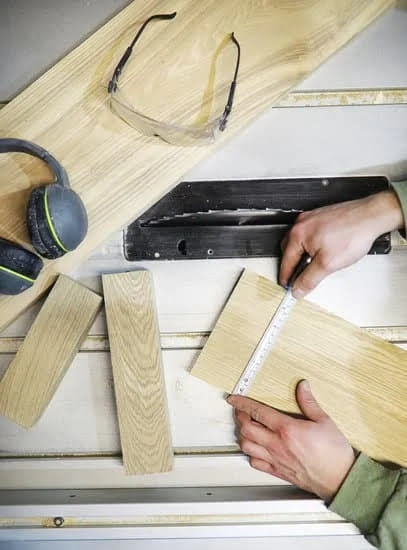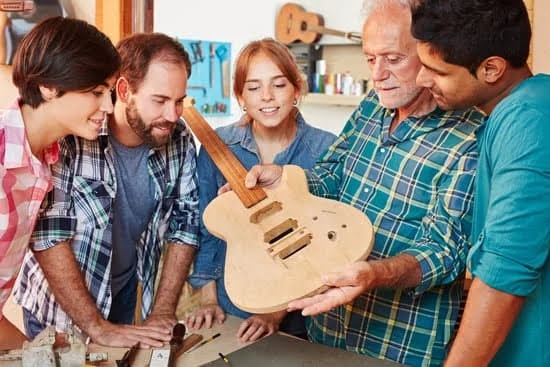Are you looking to upgrade your woodworking tools with a reliable vise? Look no further. In this blog post, we will guide you through the process of building a high-quality woodworking vise with a Yost screw.
A sturdy and dependable vise is an essential tool for any woodworker, providing the necessary grip and support for various projects. Whether you’re a seasoned professional or just starting out, having the right vise can make a significant difference in the quality of your work.
Understanding the Yost screw is crucial for building an effective woodworking vise. We’ll delve into its features and benefits, as well as explain how it functions to enhance the performance of your vise. With our step-by-step instructions, you’ll gain valuable insight into selecting the right materials for the project. We’ll also provide tips on where to find high-quality materials to ensure that your woodworking vise is built to last.
Once you have gathered all the necessary materials, we’ll walk you through preparing a suitable workspace for constructing your woodworking vise. Emphasizing safety precautions and proper organization is key to ensuring a smooth building process.
From there, we’ll guide you through every stage of building the vise frame, installing the Yost screw, testing and adjusting for optimal performance, adding final touches, and using your new woodworking vise efficiently. So let’s get started on crafting that perfect woodworking vise with a Yost screw.
Understanding the Yost Screw
A woodworking vise with a Yost screw is an essential tool for any woodworker, providing the necessary clamping force to hold workpieces securely in place during various woodworking projects. The Yost screw, known for its durability and smooth operation, is a popular choice for building reliable and long-lasting woodworking vises. In this section, we will delve into the specific features and benefits of using a Yost screw for constructing a woodworking vise.
Features and Benefits
The Yost screw is designed with precision threads that allow for smooth and effortless operation when clamping workpieces. The fine threads of the screw also provide excellent clamping force, ensuring that the workpiece remains firmly in place during woodworking tasks. Additionally, the Yost screw is constructed from high-quality materials such as steel or iron, making it highly durable and resistant to wear over time.
One of the key benefits of using a Yost screw for building a woodworking vise is its versatility. Whether you are working on small-scale or larger projects, the Yost screw provides consistent performance and reliable clamping force. Its design also allows for quick adjustments, making it easier to accommodate different workpiece sizes and shapes.
Functionality
The functionality of the Yost screw lies in its ability to transform rotational motion into linear clamping force. As the handle of the screw is turned, the threads engage with the corresponding components within the vise, causing the jaws to close in on the workpiece. This simple yet effective mechanism allows woodworkers to secure their materials with precision and control.
Understanding these features and benefits of the Yost screw will be crucial as we move forward with selecting materials and preparing to build our own woodworking vise. By utilizing this knowledge, we can ensure that our vise will be equipped with a reliable clamping mechanism that meets our woodworking needs effectively.
Selecting the Right Materials
Building a woodworking vise with a Yost screw requires the selection of high-quality materials to ensure its durability and functionality. Here is a detailed list of the materials needed for this project:
Materials Needed:
- Hardwood boards for the vise jaws and frame
- Yost screw and accompanying hardware
- Wood glue
- Screws and fasteners
- Sandpaper in various grits
- Wood finish or sealant
When selecting hardwood boards for the vise jaws and frame, it is essential to choose durable wood species such as maple, oak, or beech. These woods are known for their strength and stability, making them ideal for withstanding the pressure and use of a woodworking vise. Additionally, hardwoods are less likely to warp or splinter over time, ensuring the longevity of your DIY vise.
The Yost screw is a crucial component of the woodworking vise, responsible for providing the clamping force needed for various woodworking projects. When choosing a Yost screw, consider factors such as its length, diameter, and thread pitch to ensure it meets the requirements of your vise design. Furthermore, be sure to select high-quality screws and fasteners that will securely hold all components of the vise together.
To complete the woodworking vise with Yost screw assembly, you will need wood glue to bond the various components together. Select a reliable wood glue that provides strong adhesion and dries clear for a professional finish. Additionally, have sandpaper in various grits on hand to smooth out any rough edges or imperfections in the wood before applying a final finish or sealant to protect the vise from wear and tear.
By carefully selecting high-quality hardwood boards, Yost screws, hardware, wood glue, and finishing materials for your woodworking vice project ensures that your finished product will be sturdy and dependable for all your future woodworking projects.
Preparing the Workspace
Prepare your workspace for building a woodworking vise with a Yost screw by following these steps:
1. Clear the Area: Before beginning any woodworking project, it’s essential to clear the area of any unnecessary clutter and debris. Make sure you have enough space to move around comfortably and access your tools and materials without any obstacles.
2. Gather Necessary Tools: Create a list of the tools you’ll need for this project, including a saw, drill, clamps, measuring tape, and safety equipment such as goggles and gloves. Ensure all tools are in good working condition before starting.
3. Organize Materials: Take inventory of the materials required for building the vise frame and installing the Yost screw. Make sure everything is easily accessible and well-organized to prevent any delays during construction.
4. Ensure Proper Ventilation: Woodworking can produce dust and fumes that may be harmful if inhaled. If working in an enclosed space, make sure there is adequate ventilation to maintain air quality throughout the project.
5. Consider Lighting: Good lighting is crucial for precision work. If your workspace lacks natural light or has dim areas, consider adding additional lighting sources to ensure clear visibility while constructing the woodworking vise.
By properly preparing your workspace, you can set yourself up for a successful project to build a woodworking vise with Yost screw installation according to existing industry standards.
Building the Vise Frame
When building a woodworking vise with a Yost screw, it’s crucial to select the right materials to ensure durability and functionality. To construct the vise frame, you will need a sturdy piece of hardwood, such as maple or beech, for the jaws and handle. Additionally, you will need steel rods or pipes for the guide rails and a heavy-duty screw with a Yost mechanism for clamping.
It’s important to source high-quality materials to guarantee the effectiveness of your woodworking vise. Look for reliable suppliers that offer premium hardwood and durable steel components. By investing in top-notch materials, you can ensure that your vise frame will withstand heavy-duty usage and provide long-lasting support for your woodworking projects.
Before embarking on building the vise frame, it’s essential to prepare a suitable workspace. Set up a clean and well-organized area where you can comfortably spread out your materials and work on the project. Ensure that you have access to essential tools such as saws, drills, clamps, and measuring instruments.
Safety precautions should also be prioritized when preparing the workspace. Wear protective gear such as goggles and gloves when handling cutting tools and power equipment. Keep your work area well-lit and free from any obstacles that could pose a hazard during construction. By taking these measures, you can create an environment conducive to successful vise frame building while prioritizing safety.
Installing the Yost Screw
When it comes to building a woodworking vise with a Yost screw, the installation of the screw is a crucial step in ensuring the functionality and durability of the vise. The Yost screw is essential for a smooth and efficient operation of the vise, allowing for precise adjustments and secure clamping of wood pieces during woodworking projects.
To begin the installation process, make sure that you have all the necessary tools and materials at hand. You will need a drill, screws, adjustable wrench, and of course, the Yost screw itself. It’s important to carefully read through the manufacturer’s instructions that come with the Yost screw to ensure proper installation.
Start by positioning the vise frame in your workspace, ensuring that it is securely held in place. Then, using the drill, create holes for the screws that will attach the Yost screw to the vise frame. Next, attach the Yost screw to the vise frame using your screws or bolts and secure them tightly into place. Use an adjustable wrench to firmly tighten everything up.
Once you have successfully installed the Yost screw onto your woodworking vise frame, be sure to test its functionality before proceeding further with any adjustments or final touches on your project.
| Tools Needed | Materials Needed |
|---|---|
| Drill | Screws/bolts |
| Adjustable wrench | Yost Screw |
Testing and Adjusting
Building a reliable woodworking vise with a Yost screw is an essential skill for any woodworker. Once you have completed the installation of the Yost screw into the vise frame, it is crucial to test and adjust the vise for optimal strength and functionality. This final step ensures that your woodworking vise will provide the stability and precision needed for various woodworking projects.
To begin testing the woodworking vise, secure it onto a workbench or sturdy surface. Place a piece of scrap wood between the jaws of the vise and tighten it securely using the Yost screw. Apply varying amounts of pressure to gauge the strength and stability of the vise. Additionally, test the smoothness of the screw’s operation by opening and closing the vise repeatedly.
Once you have tested the woodworking vise with the Yost screw, make any necessary adjustments to ensure optimal performance. This may involve tightening or loosening certain components, such as adjusting the alignment of the jaws or fine-tuning the operation of the Yost screw. These adjustments will help in achieving precision and reliability when using your newly-built woodworking vise for future projects.
| Materials Needed | Where to Find |
|---|---|
| Hardwood for Vise Frame | Local Lumberyard |
| Yost Screw | Hardware Store or Online Retailer |
| Bench Dog Set-Up | Woodworking Supply Store |
| Varnish or Wood Finish | Home Improvement Store |
Final Touches and Usage Tips
In conclusion, building a woodworking vise with a Yost screw can be a rewarding and beneficial project for any woodworker. By understanding the features and benefits of the Yost screw and selecting the right materials, it is possible to create a sturdy and reliable vise that will enhance woodworking projects.
Proper preparation of the workspace is essential for safety and efficiency, and following the step-by-step instructions for constructing the vise frame and installing the Yost screw will result in a high-quality finished product.
After testing and adjusting the newly-built woodworking vise, it’s important to add final touches for both aesthetic appeal and functionality. This may include adding protective coatings to prevent rust or corrosion, as well as ensuring that all components are properly aligned for optimal performance.
Additionally, usage tips can help woodworkers get the most out of their new vise with a Yost screw, such as applying even pressure when clamping objects or using appropriate accessories for different types of woodworking projects.
Ultimately, learning how to build a woodworking vise with a Yost screw provides woodworkers with valuable skills and knowledge that can be applied to future projects. The satisfaction of creating a useful tool from scratch, tailored to one’s specific needs, is an incredibly rewarding experience. Whether for personal use or professional applications, a well-built vise with a Yost screw can significantly improve the quality and precision of woodworking endeavors.
Frequently Asked Questions
What Is the Best Wood for Vise Screws?
The best wood for vise screws is typically hard maple or beech. These woods are strong, dense, and resistant to wear and tear, making them ideal for the demanding job of holding pieces firmly in place. Their smooth grain also allows them to withstand the pressure and twisting that comes with clamping.
How Do You Make a Wooden Vice?
Making a wooden vice involves creating a sturdy frame, installing a wooden screw mechanism, adding clamping pads, and ensuring that all moving parts operate smoothly. It requires careful measurements, precise drilling and cutting, as well as attention to detail to ensure that the vice operates effectively and lasts for a long time.
How Do You Set Up a Woodworking Vise?
Setting up a woodworking vise involves securing it onto a workbench at the right height and orientation for comfortable use. It also requires ensuring that the jaws are aligned properly to provide a parallel clamping surface. Additionally, lubricating the screw mechanism and checking for smooth operation is essential to make sure the vise works effectively.

Hi everyone! I’m a woodworker and blogger, and this is my woodworking blog. In my blog, I share tips and tricks for woodworkers of all skill levels, as well as project ideas that you can try yourself.





